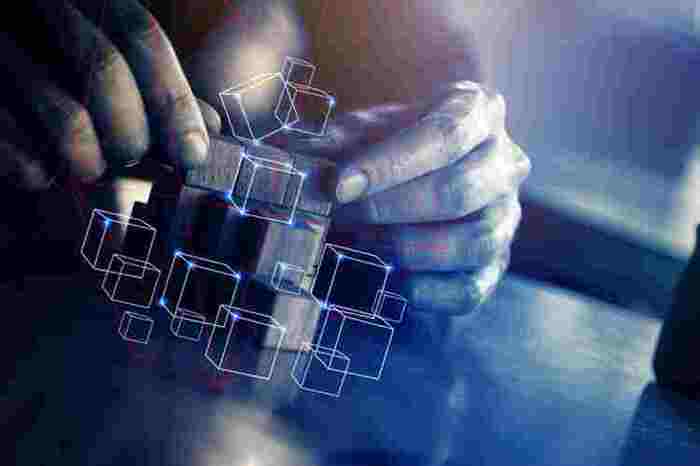What Is Edge Computing, The Future Of Connectivity
Content
Moreover, edge computing systems must provide actions to recover from a failure and alerting the user about the incident. To this aim, each device must maintain the network topology of the entire distributed system, so that detection of errors and recovery become easily applicable. As an https://globalcloudteam.com/ example an edge computing device, such as a voice assistant may continue to provide service to local users even during cloud service or internet outages. Edge computing systems store and process collected data locally on edge devices without uploading it to a cloud computing platform.

Additional costs come from significant real estate expenses and cooling and maintenance personnel, among other things. Organizations also have a choice between building their own edge clouds or using a pre-existing platform like AWS Outpost to set up a cloud instance locally. The former can be up to 90% more expensive, as a customized solution may create more costs than expenditures for the server hardware and software licenses. Edge computing is no longer simply about putting some local storage into a remote or branch office .
The explosive growth and increasing computing power of IoT devices has resulted in unprecedented volumes of data. And data volumes will continue to grow as 5G networks increase the number of connected mobile devices. Not all the information transmitted by IoT devices to form the Big Data What is edge computing universe is actually useful, which hinders analysis due to a surfeit of information. This is where edge computing plays an important filtering role by only sending information to the cloud that is relevant, based on pre-established parameters, thereby reducing energy consumption, too.
At Rancher Government Solutions, we like to say that our software meets you at the mission – and this is one example of how. The router is great for extending the connectivity to additional devices like a laptop. The router also has a “repeater” function for Wifi – meaning, all the nodes reach the internet for updating and initial loading of software. As a side note, some of the Gl.iNet routes also have WireGuard capabilities. Ideally, teams will want a lightweight Kubernetes distribution and management layer since not all Kubernetes distributions can operate in a smaller compute envelope.
Most edge data centers have few to no IT staff on site to manage them, whether it’s a remote, outdoor facility driving utility IoT applications or a retailer with hundreds of stores. In such instances, the ability to remotely manage and service the edge components is critical. Maintenance needs to be predictive and proactive, to ensure the site has no downtime and to reduce the cost of service calls. A cloud-based management platform that takes advantage of intelligent analytics applications can be an effective solution. Edge computing refers to processing, analyzing, and storing data closer to where it is generated to enable rapid, near real-time analysis and response.
Explore 5g And Edge Computing Solutions
Edge computing is necessary to address shortcomings in cloud-based applications and services with respect to performance and regulatory requirements. In short, cloud computing can’t always meet the required demands in terms of response time that critical applications require. Companies that face government regulations regarding where data is stored may also find cloud computing can’t deliver the sort of local storage they need.
- In the 2000s, the increased shift to mobile and early smart devices increased the strain on existing IT infrastructure.
- Another predominant type of edge network is the mobile edge network or computing, an architecture that uses the edge of the cellular network for operations.
- Edge computing is different from cloud computing in that most data is processed and stored locally, with only some relevant or important data being sent to the cloud.
- Another great reason to choose RKE2 for your Kubernetes layers is that air-gapping the software is not an afterthought.
- To deliver on these promises, they’re using IoT technologies such as digital health records, digital imaging and telemedicine.
Below are four edge computing use cases that show how Intel has helped companies enable new experiences and drive more-efficient operations. Edge computing is just one part of a distributed computing architecture and requires consideration of infrastructure, from edge devices to on-premises edge to network to cloud, when designing an interoperable edge-to-cloud solution. Find a vendor with a proven multicloud platform and a comprehensive portfolio of services designed to increase scalability, accelerate performance and strengthen security in your edge deployments. Ask your vendor about extended services that maximize intelligence and performance at the edge.
Disadvantages Of Edge Computing
IoT applications are making life easier for customers in just about every walk of life. Small, localized data centers that offer significant processing and storage capabilities. Securing sensitive data, such as private medical records, at the edge and transmitting less data across the internet could help increase security by reducing the risk of interception. In addition, some governments or customers may require that data remain in the jurisdiction where it was created.
Software-defined networking allows users to configure the overlay networks. Edge computing is a decentralized computing framework where computing power is brought closer to the source of data generation. Edge computers are like mini data centers processing and storing data, only sending essential data to the cloud for storage or post-processing.
Make sure there’s an easy way to govern and enforce the policies of your enterprise. However, when the deployment size is large, e.g., for Smart Cities, fog computing can be a distinct layer between the Edge and the Cloud. Hence in such deployments, Edge layer is a distinct layer too which has specific responsibilities.
Edge computing offers lower latency because edge computers are often deployed close to the source of data generation, reducing the distance that data has to travel for processing and analysis. Edge computing serves a particularly critical role in today’s cloud computing environment. Cloud computing struggles to keep pace with this explosion of services and applications due to latency, often caused by network distance from the data source. That said, the resulting inefficiency are not an option for applications that need near-instant analysis and response.
As a result, application developers can use the on-device computing systems by offering the users services closer to them. Edge computing is characterized in terms of high bandwidth, ultra-low latency, and real-time access to network information that can be used by several applications. As consumers come to expect increasingly personalized and immersive experiences, applications require more data processing and logic in real time. Edge computing helps mitigate these obstacles by decentralizing the data processing. At its core, edge computing is the processing and synthesis of data closer to end users, where the data is created and compiled, rather than in the central cloud.
Computing At The Edge: Rugged Edge Computing
The term “periphery” is a bit vague; for example, a user’s computer or an IoT camera’s processor might be considered the edge of the network, but the user’s router, ISP, or local server are also considered the periphery. The important thing to remember is that the network edge is geographically close to the device, unlike origin servers and cloud servers, which can be very far from the devices they communicate with. Edge computers are also often used in product manufacturing facilities for industrial automation and control purposes. For example, edge computers enable communication between factors machines, sensors, and equipment.

Edge computers can alleviate the stress on data centers by processing and storing data locally, only pushing specific essential data to the cloud. Edge computing is different from cloud computing in that most data is processed and stored locally, with only some relevant or important data being sent to the cloud. This significantly reduces the amount of data that data centers have to process or store. Analyzing the data generated by IoT and IIoT devices can provide deep insights into the operations of a business, allowing organizations to act quickly on real-time data. The ability to react to insights in real-time enables businesses and organizations to improve their productivity and the quality of products or services provided by them. That said, to extract invaluable insights from your data, computing power must move to the edge close to the source of data generation.
Why Is Edge Computing Necessary?
For instance, store managers may immediately implement customized promotions depending on point-of-sale data. Many businesses develop their business plans around extracting insights from data and acting quickly to monetize it. Infrastructure and Operations (I&O) leaders must anticipate this trend and accelerate the enterprise? S effective deployment of an expanding range of edge computing applications to stay competitive. Organizations are placing more and more emphasis on cutting down on the amount of data communicated and kept in the cloud and the lag time in data processing and transmission.

This can be a huge benefit for organizations that need to be able to respond quickly to changing business conditions. In the enterprise, edge computing can be used for tasks such as fraud detection or image recognition. Edge server systems eliminate the need for a computing middleman and reduce total latency. Furthermore, rugged edge PCs are equipped with shock and vibration resistance. Systems are capable of withstanding 5Gs of shock and 50GRMs of vibration in compliance with the MIL-STD-810G. This allows organizations to deploy systems in environments where the industrial PC will be exposed to frequent and continuous shock and vibration.
What To Look For In An Edge Computing Course
This is the point where data enters or leaves the network, and it’s where edge devices connect to the internet or other networks. Physical SecurityEdge data centers may be located in server rooms and IT closets, under cash registers or desks. This leaves the edge infrastructure open to accidental damage, attack from nefarious actors who intend to do harm, as well as employees with good intentions who simply don’t know any better.
Discover The Future Of Edge Computing In Your Industry
Re moving to edge computing, you need to think about how it should be engineered and the additional cost you may have to endure to get to your target performance benchmark. Re banking on commodity systems always performing better than centralized cloud computing systems, that may not always be the case. Cloud computing is a centralized computing framework that offers unlimited computing power and storage. With cloud computing, users connect to data center computers over the internet and pay for the resources (compute power & storage) they use.
Edge PCs are also often deployed as IoT gateways for smart agriculture applications. For example, edge computing solutions are often used to gather, process, and analyze weather conditions, soil moisture, sunlight, and other variables to improve the growth of crops. Securing a distributed edge computing network can be difficult and often require physical access to each individual deployed device.
Methods To Create A Virtual Data Room
The state-of-the-art scheduling technique can increase the efficiency of utilize edge resources and scales the edge server by minimum edge resources to each offloaded tasks. One of the downsides of edge computing is that it can increase attack vectors. With the addition of more “smart” devices, such as edge servers and IoT devices equipped with rugged computers, malicious actors have new opportunities to compromise these devices. Another disadvantage of edge computing is that it requires more local hardware. For example, while an IoT camera needs a built-in computer to send its raw video data to a web server, it would need a much more sophisticated computer with greater processing power to run its own motion detection algorithms. But falling hardware costs are making it cheaper to build smarter devices.
In many ways, edge computing is the next evolution of cloud computing, with the rise of 5G networks across the country and around the world. Now more companies than ever before can harness comprehensive data analysis without the IT infrastructure needed in previous generations. Likewise, edge computing has many possible applications, including security and medical monitoring, self-driving vehicles, video conferencing, and enhanced customer experiences.
